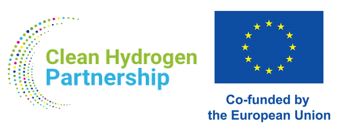New Breakthrough in Green Hydrogen Production: Redox Mediators Developed for Efficient Water Electrolysis
Researchers at the Universitat Politècnica de València (UPV), as part of the EU-funded REDHy project, have successfully developed a new set of redox mediators designed to enhance green hydrogen production. These mediators aim to improve water electrolysis efficiency, addressing current technological limitations while reducing reliance on critical raw materials.
Redefining Electrolysis with Redox Active Molecules
The goal of this research is to create redox-active molecules that can mediate electron transfer in both the cathodic (hydrogen evolution) and anodic (oxygen evolution) half-reactions of electrolysis. These molecules will enable more efficient, scalable, and environmentally friendly hydrogen production without relying on scarce or expensive materials like platinum or iridium.
The team synthesized two key types of mediators:
-
Cathodic Redox Couples (CROC): Viologens, diquats, and quinones were synthesized and characterized using advanced techniques such as NMR, DEPT, and IR. Electrochemical testing revealed several promising compounds that function within the target potential range for hydrogen evolution (-0.15 to -0.05 V vs RHE).
-
Anodic Redox Couples (AROC): Transition metal complexes based on iron, manganese, and nickel, coordinated with oxydiacetate (ODA) ligands, were also developed. These compounds were characterized using elemental analysis, IR spectroscopy, and crystallography, with many showing electrochemical reversibility in 0.1 M Na₂SO₄—meeting the performance targets of the REDHy project.
A Significant Step Forward
After testing for solubility, stability, and electrochemical reversibility, a subset of the redox mediators was identified as suitable for integration into next-generation electrolysis cells. Of the 16 compounds synthesized (7 CROCs and 9 AROCs), five CROCs were active in neutral electrolyte (0.1 M Na₂SO₄), and three remained effective in alkaline conditions (0.1 M KOH). Among the AROCs, only ODA complexes of Mn, Fe, and Ni displayed the required electrochemical performance in neutral electrolyte.
Transforming the Future of Hydrogen Production
These results mark a major step for the REDHy project, which seeks to develop a cost-effective, sustainable hydrogen production system. By reducing reliance on critical raw materials, the project supports the EU’s circular economy goals and contributes to the growth of green hydrogen technologies, addressing the growing demand for clean energy.
The synthesis and testing of these redox mediators lay the groundwork for next-generation electrolysis cells that can operate efficiently under milder conditions without noble metals.
Looking Ahead
The newly developed redox mediators will be integrated into future stages of the REDHy project, advancing the development of more efficient, flexible, and sustainable green hydrogen production technologies. This innovation will play a key role in shaping the future of the hydrogen economy, helping Europe and the world transition to cleaner, renewable energy.


